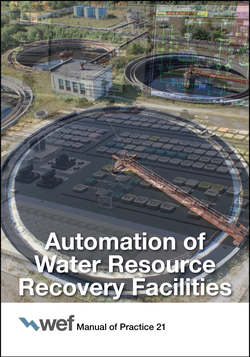Читать книгу Automation of Water Resource Recovery Facilities - Water Environment Federation - Страница 205
3.0 MISTAKE PROOFING
ОглавлениеIn addition to the need to react to and compensate for disturbances, automatic control plays an important role in “mistake proofing”. Typical process control ensures that the process is maintained as long as reasonable ranges and bounds exist for the process. Mistake proofing is meant to keep the process within these ranges and bounds.
Mistake proofing denies the ability of the control system to perform functions that could cause harm or damage to personnel, equipment, or the process itself. To properly institute mistake proofing, an analysis of potential failures with significant consequences needs to be undertaken. Knowing potential significant failures, a failure analysis, or failure tree, must be performed to find all of the potential circumstances and causes for the possible failures. Once the circumstances and causes for a potential failure are known, an approach to “mistake proof” the process and prevent the failure can be initiated. There are four main strategies for mistake proofing:
• Elimination of the possibility,
• Prevention of the mistake,
• Detection and alarm, and
• Loss control.
Elimination is not as important as the other mistake-proofing strategies in automatic control because it typically is not possible to eliminate the process function. Conversely, prevention is the most common method of mistake proofing used in automatic control. The control system can prevent mistakes from occurring. Detection can be used to identify potential or actual problems. Loss control is used to control a problem once it is detected and to keep it from getting worse. For example, the control system can stop chemical flows once a leak is detected.
Automatic control mistake proofing is carried out with interlocks and permissives. The system must be able to sense when a mistake could occur (or has occurred). This is done with sensors such as proximity switches that indicate valve position, level sensors on a tank, pressure sensors, and so on. If a mistake occurs, it is necessary for the system to provide actions such as stopping a pump, closing or opening a valve, and so on.
An example of mistake proofing is preventing pump damage by ensuring an adequate path for sludge before allowing a positive displacement sludge pump to start. The control system can monitor the position of all valves in the potential pump discharge path. If an adequate path does not exist to ensure safe flow to an appropriate destination, the control system will prevent the pump from starting.
